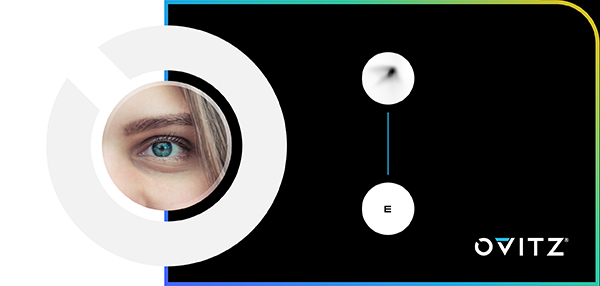
Managing Keratoconus Using Cutting-Edge Eyecare Tech
BLOG

As an eyecare professional, it is always frustrating when you have patients whose vision cannot be improved to either your or their satisfaction.
Even with the abundance of advanced treatment techniques at your disposal, it can often seem like healthy vision is not within everyone’s grasp. People with keratoconus are excellent examples of such patients.
Fortunately, there is cutting-edge technology to help your most difficult patients.
Higher Order Aberrations
Increasingly, many progressive eyecare practices are looking into correcting higher order aberrations (HOAs) for their patients. These advances are particularly good for their keratoconus patients.
HOAs are caused by imperfections of the eye. Some of these imperfections result in irregular surfaces on the cornea and lens and misalignment between them. This irregular surface means light enters the eye from multiple angles, causing it to refract inconsistently. As a result, HOAs cause significant visual problems, including: glare or streaks, halos or rings, poor night vision, ghost images, double vision, blurring, starburst patterns.
You can consider HOAs in contrast with lower order aberrations (LOAs) such as myopia and astigmatism. LOAs are relatively easy to correct with conventional contact lenses or glasses. But, since they don’t remain in a fixed position over the eye, glasses and conventional contact lenses cannot correct HOAs. Because of this shortcoming, keratoconus patients usually do not receive good vision using eyeglasses or soft contacts.
They can get relatively better vision using scleral lenses. A scleral lens vaults over the surface of the eye, making a more comfortable fit for keratoconus patients. Between the eye and the “vaulted” surface of the lens, tear fluid builds up and reduces HOAs by filling up the irregular front cornea surface. Scleral lenses also stay in a fixed position better, helping correct the problem mentioned above.
One shortcoming, though, is that scleral lenses may not adequately correct for all HOAs if you don’t have the right technology to quantify and correct them. This is especially true for HOAs induced by the back surface of the cornea, lens, and the misalignment between these optical layers in the eye. Patients managing keratoconus with a conventional scleral lens generally suffer a significant amount of HOAs affecting vision.
Quantify and Correct HOAs
Fortunately, with the right technology, doctors can go beyond detecting a handful of LOAs and detect more than 28 kinds of HOAs.
To get a more complete representation of visual quality, you should quantify aberrations induced by the entire eye, including both the cornea and crystalline lens, along with aberrations introduced by the misalignment of these optical layers.
To address this shortcoming, some forward-thinking eyecare professionals have tried to address HOA quantification and correction using wavefront technology. However, these efforts have been hit-and-miss due to the systems failing to provide sufficient ocular measurement data to apply to optical correction.
OVITZ’s cutting-edge Eyecare Tech
OVITZ has entered this space with a powerful, easy-to-use solution. The OVITZ xwave is a new tool that provides advanced wavefront aberrometry measurement and scleral lens design, together in one closed-loop system.
The xwave aberrometer records a complete ocular measurement, providing submillimeter-accurate accuracy along the patient’s visual axis. It then uses this measurement to create an optimized lens design. It’s never been easier to offer effective vision correction for keratoconus patients and others who suffer HOAs.
Patient-Pleasing Results
Patients have been highly pleased with their results with OVITZ, mentioning their much-improved vision quality, elimination of visual artifacts, and vision that seems a decade younger.
Here you can see some of the results patients have enjoyed with OVITZ xwave ARES HOA lenses. Of note are Z7 and Z8, which are Coma—the most common higher order aberrations observed with keratoconus—causing double vision. There were reduced significantly in both instances.